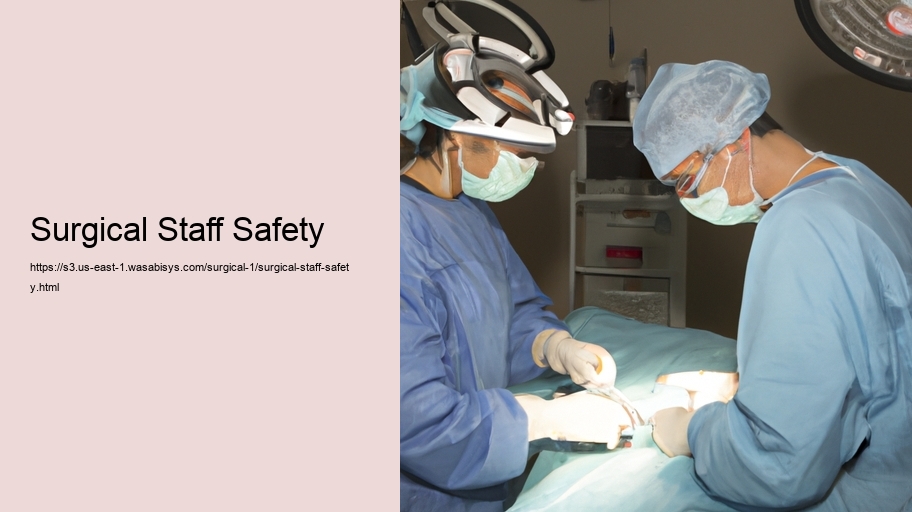Surgical Staff Safety: Ensuring a Secure Environment for Healing
The operating room (OR) is a nexus of high-stakes decisions, life-saving procedures, and the concerted efforts of a team of healthcare professionals. The safety of surgical staff is paramount, not only for their own well-being but also for the uninterrupted delivery of patient care. A secure and efficient OR is a cornerstone of any healthcare system, and maintaining the safety of surgical staff is both a moral imperative and a practical necessity.
At the heart of surgical staff safety are measures designed to prevent physical harm. The nature of surgical work involves risks such as exposure to sharp instruments, hazardous substances, and potentially infectious bodily fluids. To mitigate these dangers, rigorous protocols are in place. Personal protective equipment (PPE) such as gloves, gowns, masks, and eye protection form the first line of defense against bloodborne pathogens and other contaminants. The use of safety-engineered devices, including retractable syringes and blunted suture needles, further reduces the risk of needlestick injuries, which can lead to serious infections.
However, physical safety is just one aspect. The surgical environment is also psychologically and emotionally demanding. Staff are required to perform under pressure, often for extended periods, which can lead to stress and burnout. Ensuring mental well-being is critical; this includes providing adequate rest, resources for stress management, and fostering a culture of teamwork and mutual support. Psychological safety, a sense in which staff can communicate openly about concerns without fear of retribution, is crucial for both the individual and the team's performance.
Ergonomics also play a significant role in surgical staff safety. The design of instruments, furniture, and equipment in the OR should promote good posture and ease of use to prevent musculoskeletal disorders. Adjustable operating tables, ergonomic instrument handles, and proper lighting conditions are examples of considerations that can help minimize strain and injury over time.
Infection control is another vital aspect of surgical staff safety. Adherence to strict aseptic techniques, regular handwashing, and proper sterilization of instruments and surfaces help in preventing the spread of infections. Surgical site infections not only endanger patients but can also pose a risk to staff if proper barriers and protocols are not meticulously followed.
Furthermore, the implementation of safety checklists has been a revolutionary step in ensuring that every member of the surgical team is aware of, and has prepared for, all aspects of the procedure at hand. These checklists provide a structured opportunity for staff to voice concerns and verify that critical safety steps have been taken before the surgery begins.
Continuous education and training are the backbone of maintaining a safe surgical environment. Regular drills and simulations can help staff stay prepared for emergency situations, while ongoing professional development ensures that the team is up-to-date with the latest safety techniques and protocols.
Effective communication is the glue that holds all safety measures together. Surgical staff must be able to communicate clearly and without hesitation. This includes the ability to alert team members to potential hazards, call for assistance when necessary, and ensure that all members are informed about the specifics of each case.
In conclusion, the safety of surgical staff is a multifaceted issue that encompasses physical, psychological, and professional dimensions. It is an ongoing commitment that requires the active participation of the entire healthcare team, from administrators to surgeons, nurses, and support staff. By maintaining a safe working environment, surgical staff can focus on what they do best: providing exceptional care to their patients, thereby not only safeguarding their own health but also ensuring the best possible outcomes for those they serve.
